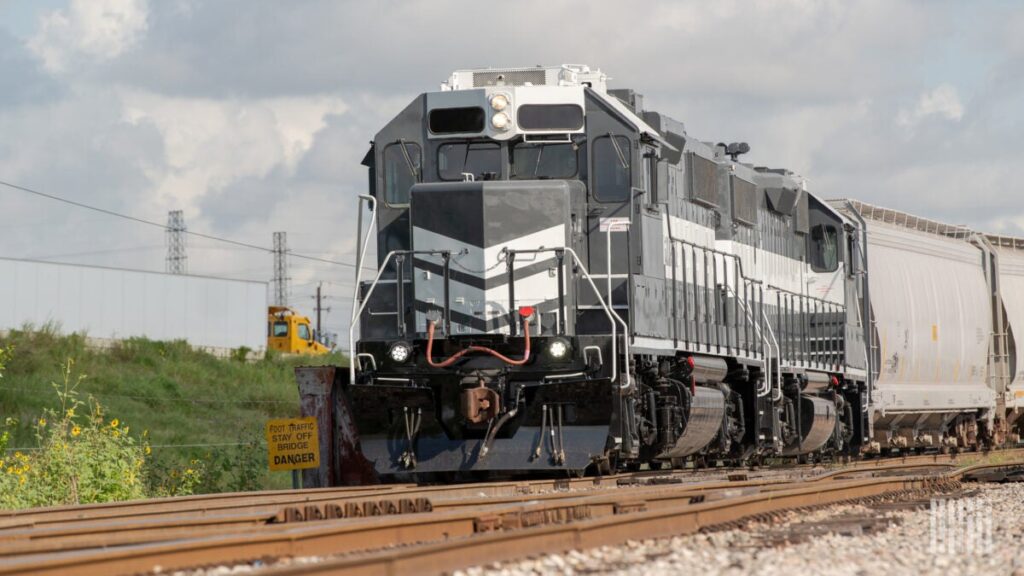On Tuesday, the Federal Railroad Administration (FRA) announced that 122 projects across 41 states and the District of Columbia will receive funding totaling over $2.4 billion through the Consolidated Rail Infrastructure and Safety Improvements (CRISI) grant program. This funding aims to revive infrastructure related to railways, enhance safety, and bolster workforce development. Transportation Secretary Pete Buttigieg emphasized in a press release that the grants will create jobs and support vital infrastructure needs, reinforcing supply chains and improving both passenger and freight rail systems. Most of the grants will be allocated to infrastructural projects, while others will support educational initiatives like job training and partnerships with universities. The FRA Administrator, Amit Bose, noted that this funding marks a significant shift in federal investment toward railroads, which have historically faced underfunding for decades.
In this funding cycle, the American Short Line and Regional Railroad Association (ASLRRA) acknowledged that a significant proportion, 81 projects, involves short line railroads or partnerships affiliated with them, amounting to over $1.29 billion—or roughly 52% of the total funds awarded. The ASLRRA itself secured a grant of more than $20 million aimed at improving infrastructure data for short lines. ASLRRA President Chuck Baker expressed optimism that these grants would lead to enhancements in safety and efficiency, benefiting small towns and rural America by linking them to broader markets while focusing on environmentally sustainable practices.
The funding distribution includes notable allocations for various states, with specific projects highlighted for their potential impact. For instance, Alaska Railroad Corporation received $43 million for the final design and construction of a crucial bridge over the Tanana River. In Arizona, significant funding was allocated to Amtrak for station improvements and track rehabilitation. Notably, projects in California included $100 million for the Orange County Transportation Authority to bolster the resilience of its rail lines and substantial allocations for the California Air Resources Board to transition diesel locomotives to battery-electric and hydrogen power. These projects exemplify a commitment to modernize rail infrastructure while promoting safety and environmental sustainability.
Other noteworthy grants include $66.4 million issued to the Colorado Department of Transportation for the installation of positive train control and improvements to rail crossings, significantly enhancing rail safety. In Michigan, $67.4 million was granted to upgrade and expand the Norfolk Southern’s Livernois Intermodal Facility in Detroit, emphasizing the state’s ongoing commitment to enhance freight movements through modernization. Additionally, various educational initiatives have been funded, such as Amtrak receiving $6.4 million for a training program aimed at future repairmen, underscoring the need for a skilled workforce to support these new investments.
The scope of the CRISI grant program displays a diverse range of projects benefiting local economies and improving safety. For instance, the funding will address various infrastructural needs, including bridge rehabilitations, crossing upgrades, and technology improvements, such as installing onboard shunt enhancement devices on Amtrak locomotives. Conversely, some grants focus on reducing pedestrian trespassing incidents near railways, reflecting an understanding of the safety challenges associated with rail transport. States like Florida and New York received specific allocations to address local safety concerns, showcasing a commitment to comprehensively addressing the multifaceted challenges of rail transport.
Overall, the CRISI grant program represents a significant federal investment in American rail infrastructure, with concerted efforts aimed at revitalizing and modernizing the rail network. These investments provide critical funding to address urgent infrastructure needs while promoting job creation and training efforts essential for maintaining a skilled workforce. As these projects unfold in various states, they will play a crucial role in not only improving safety and efficiency for rail transport but also in strengthening local economies and establishing vital connections between rural regions and larger markets. The ongoing support for rail infrastructure marks a pivotal movement toward advancing sustainable transportation options in the United States, making way for a safer, greener future for rail systems nationwide.

